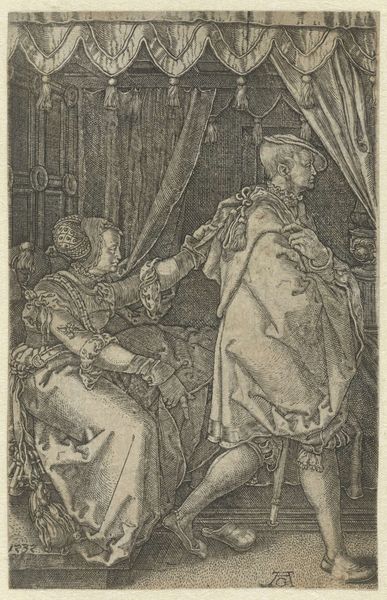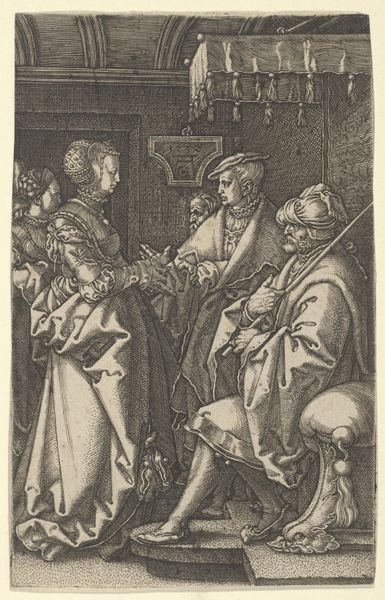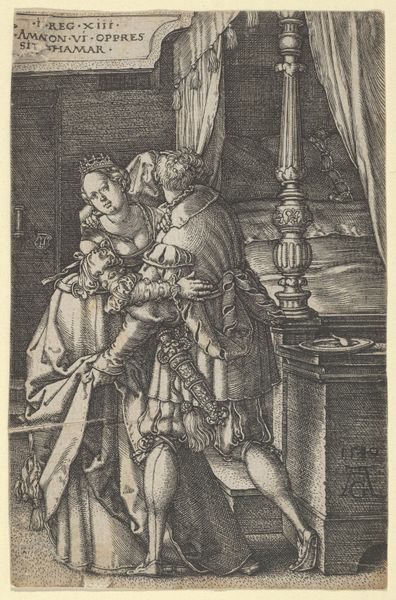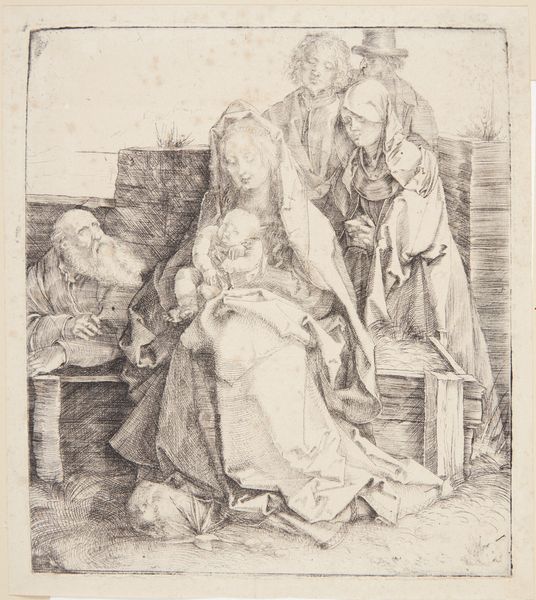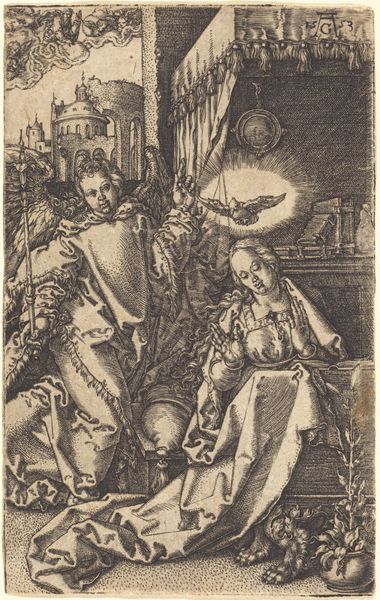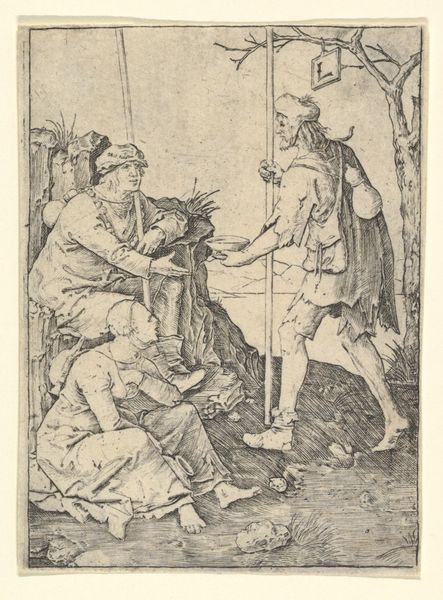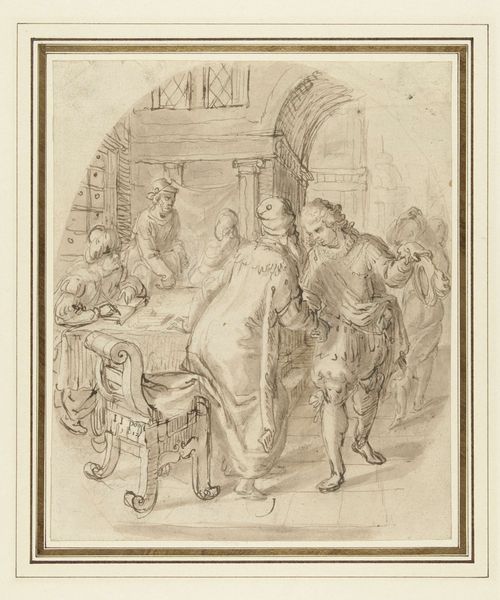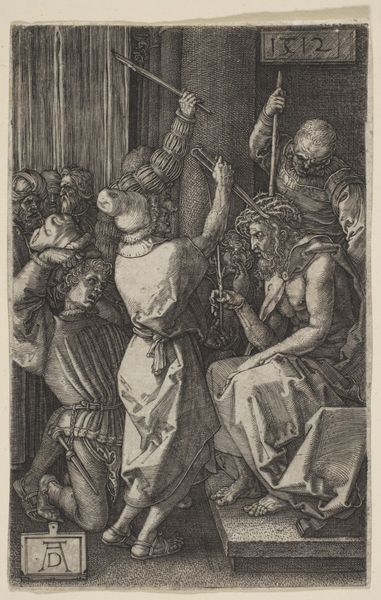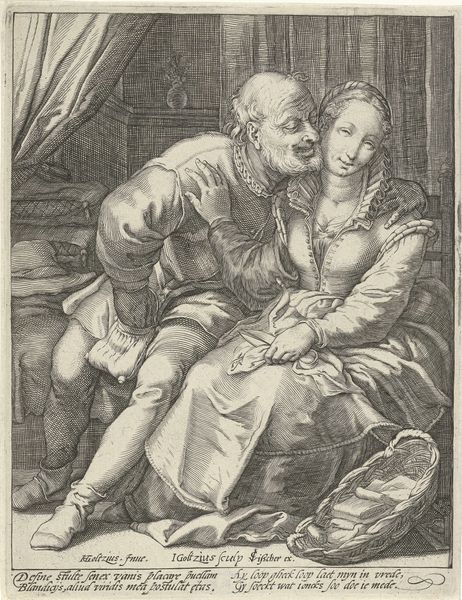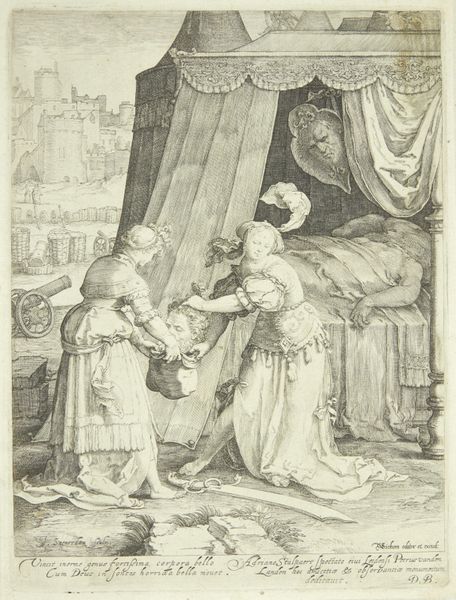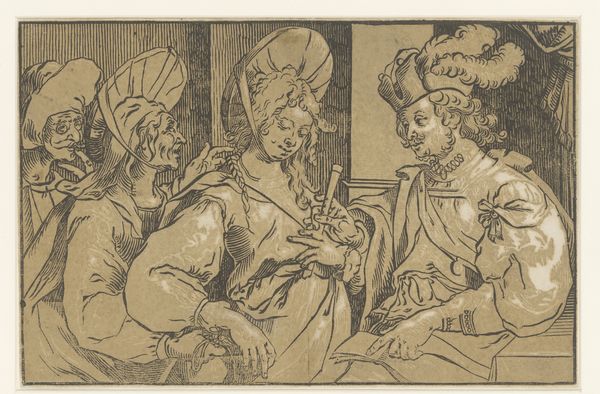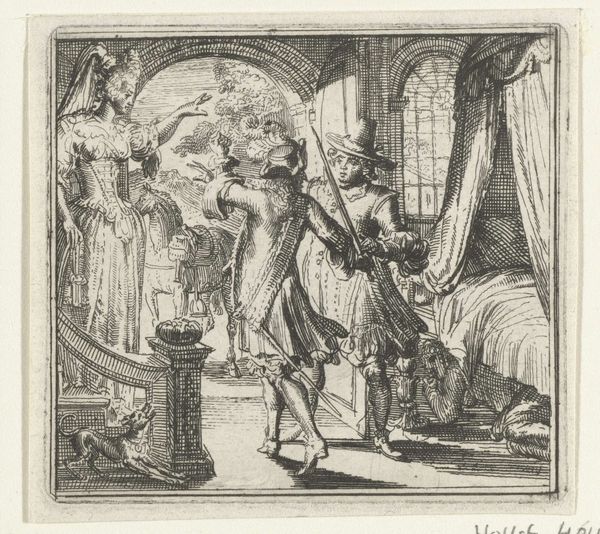
Dimensions: Overall: 4 5/8 x 3 in. (11.8 x 7.6 cm)
Copyright: Public Domain
Curator: Welcome to the Metropolitan Museum. We are standing before Heinrich Aldegrever's engraving, "Joseph and Potiphar's Wife," created sometime between 1515 and 1565. Editor: The drama is palpable, isn’t it? The claustrophobic chamber, the stark black-and-white, it feels almost stage-like. The expressions of both figures have a quality like that of a morality play. Curator: Indeed. Note the rigorous cross-hatching that defines form and space. Aldegrever masterfully employs the engraving technique to create textures. See the differing weights of the lines to distinguish fabrics. The heavy lines creating shadow contrast with the lighter, more delicate strokes describing skin. Editor: And look at the composition! The figures’ gestures and positioning embody the struggle between them. Potiphar’s wife lunges toward Joseph, and yet his posture reflects repulsion. There is cultural significance at play; her attempt at seduction echoes the Eve and temptation motifs from the Garden of Eden, inverting that familiar narrative onto a patriarchal social structure. Curator: I see the figures as acting as compositional anchors, stabilizing the image. The tension between their bodies echoes and strengthens the angularity of the scene. Every diagonal is fraught with symbolic implications of both resistance and forceful pursuit. Consider the balance in the formal structure: it prevents it from slipping into chaos, in contrast with the internal disruption that we feel is happening. Editor: I agree the chaos is only emotional. Notice the very small slipper near the bottom of her bed-like platform? Even that diminutive object lends credibility to the narrative—such detail underscores this story with themes that transcend time. Think of its continuous relevance and the psychology that even modern audiences bring to the artwork. Curator: Considering this artist belonged to the German Little Masters group of engravers and printmakers, Aldegrever’s choice of making his figures so large in the limited frame, intensifies the image, achieving visual interest. Editor: A perfect illustration, so to speak, of how a Renaissance artist re-interpreted a story for the ages. It continues to invite viewers to think critically. Curator: It's the convergence of rigorous structure and the drama inherent to the image. An interplay worth contemplating further.
Comments
No comments
Be the first to comment and join the conversation on the ultimate creative platform.
